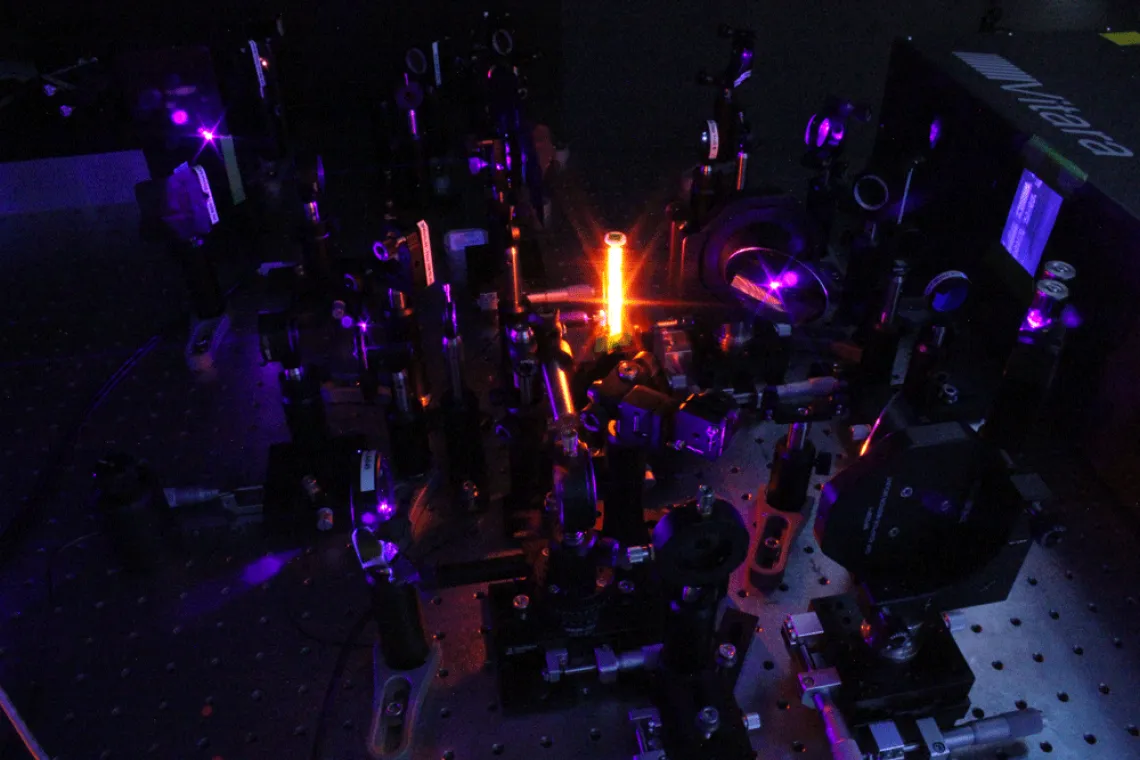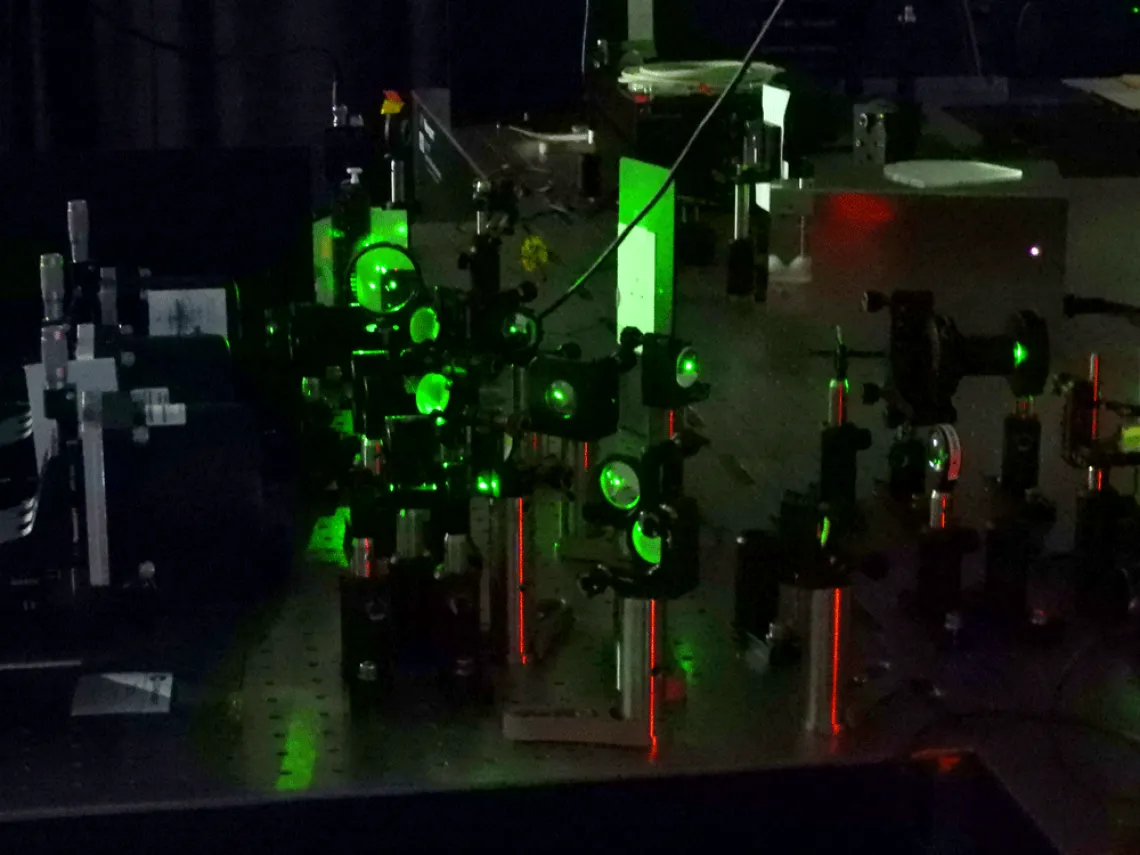Nonlinear Ultrafast Optical Spectroscopy
The Huxter Lab uses laser pulses to map and control the flow of energy through electronic and vibrational states of molecular and solid-state systems. Dynamics involving these states determine everything from the efficiency of solar cells to redox chemistry to quantum information processing and storage, among many other phenomena. We are currently investigating optical controls of redox-activity and catalysis with applications to solar energy capture and biologically relevant synthesis.

Revealing the Mechanisms of Photoredox Catalysis
The Huxter group uses advanced spectroscopic methods such as time-resolved fluorescence, ultrafast broadband transient absorption, and two-dimensional electronic spectroscopy to study the initial steps of light-driven catalytic reactions that generate both simple and complex molecules under mild conditions.
These spectroscopic techniques are used to track the chemical species produced by light-triggered chemical reactions and to reveal the free energy landscapes associated with such reaction mechanisms. This research will identify the driving forces and intermediate states for photoredox catalytic reactions, which could open pathways to design new, efficient catalysts.

Ultrafast Dynamics of Neutral Radicals
Using ultrafast nonlinear spectroscopy, we are investigating the dynamics of neutral radical molecules. Their overall neutral charge can lead to longer lifetimes and broader solvent compatibility versus typical radical species. A neutral radical can have deep electron reservoirs for multiple electron-transfer events. Neutral radical organometallic complexes can also have manipulatable spin properties that enable rapid intersystem crossing from a doublet to a singlet or triplet state.
Our recent work on neutral radicals has focused on a novel series of tripyrrindione-metal complexes. These molecules are related to linear or macrocyclic oligopyrroles, such as tetrapyrrolic porphyrins as well as bilins, chlorophylls and bacteriochlorophylls. Tripyrroles are uncommon in nature, however, they possess many of the desirable properties of tetrapyrroles. These systems have optical and material properties that make them attractive for the development of new redox-active molecules, for catalytic applications and as optical sensors. Experiments on neutral radical tripyrrindione systems with tunable redox-active chemistry have demonstrated controllable spin states, reversible antiferromagnetic coupling, and spin-dependent electronic relaxation.
